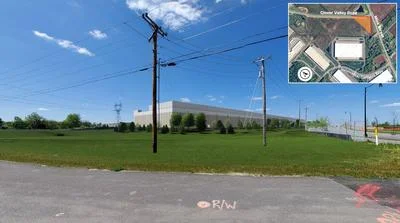The application process for Frasier Solar reached a new stage this month after the Ohio Power Sighting Board (OPSB) held its last formal meeting on August 19.
The OPSB is now considering whether the proposed facility meets the eight criteria for approval outlined in the Ohio legal code. One aspect of the OSPB’s consideration is whether the economic impact of Frasier Solar “will serve the public interest, convenience, and necessity” of the local community.
Much of the opposition in Knox County to Frasier Solar has focused on this concern.
Knox Smart Development, for instance, has stated that it has “very legitimate concerns regarding potential consequences to the … forecasted short and long term economic and environmental impacts, should the pending Application be approved.”
Another concern expressed by Knox County Regional Airport Authority (KCRAA) Chair Joe Ziegman is that the proposed Frasier Solar project could threaten the safety of flight and financial stability of the Knox County Airport.
“Both are now in jeopardy if the Frasier industrial solar project is permitted to move forward in its current form and locations,” wrote Ziegman in a recent report.
The concerns for the airport are based on the impact of glare and turbulence coming from the solar facility. Ziegman noted that the Wyandotte Airport in Upper Sandusky is already experiencing issues with turbulence from an existing solar facility.
“The glare and turbulence risk from large solar fields adjacent to the airport will likely dissuade many student pilots from using our airfield as they learn and advance their skills,” said Ziegman.
A reduction in airport activity because of the loss of student pilots would hurt airport revenue, according to Ziegman. This could have a significant impact on plans for future growth.
Preserve Knox County Ohio, LLC questions the accuracy of Frasier’s economic impact claims. It writes that Frasier's “economic impact study in the Application is incomplete and marred with flaws. The study does not identify or quantify the adverse economic impacts of the Project, such as the adverse economic impact of the proposed facility on local commercial and industrial activities.”
For instance, Frasier’s application says it will create 232 jobs during construction. However, those jobs are temporary and many of them are often filled with non-local workers with the necessary skills.
Frasier also claims that the project will create five jobs during its operating phase. However, many facilities operating in other states have provided much lower expectations. Skull Creek Solar in Anderson County, Texas promised to create only one permanent job. The same is true for El Molino Solar in Webb County.
The main financial benefits from Frasier Solar appear to go to local governments, not jobs and people. Frasier’s application says it will make payments in lieu of taxes (PILOT) totaling $1.1 million annually to local governments.
The PILOTs will be spread unevenly among local taxing entities. Almost half of the payments will go to the Mount Vernon City School District. But Mt. Vernon City will only receive $2,876 annually.
According to Frasier, the PILOTs will have limited impact on the local economy. Frasier says its project will only create “6 indirect and induced jobs,” the type of jobs that would be created by tax payments.
It is unclear what effects Frasier Solar will have on real estate development in the area. One hundred acres of the project, including a substation and solar arrays, will be in Mt. Vernon. What other development and what other tax revenue might come instead of Frasier is unknown, but nearby areas include both commercial and residential developments which, at least in the case of Mt. Vernon, could produce higher revenue than what the city will receive from Frasier.







